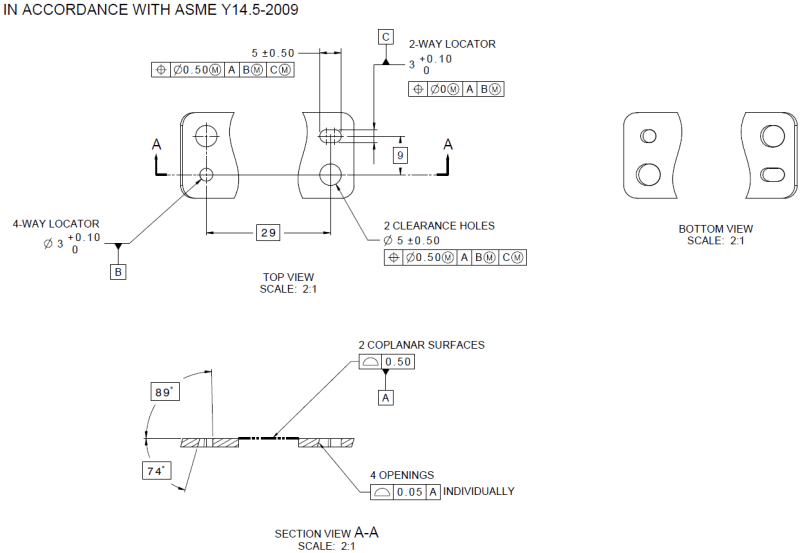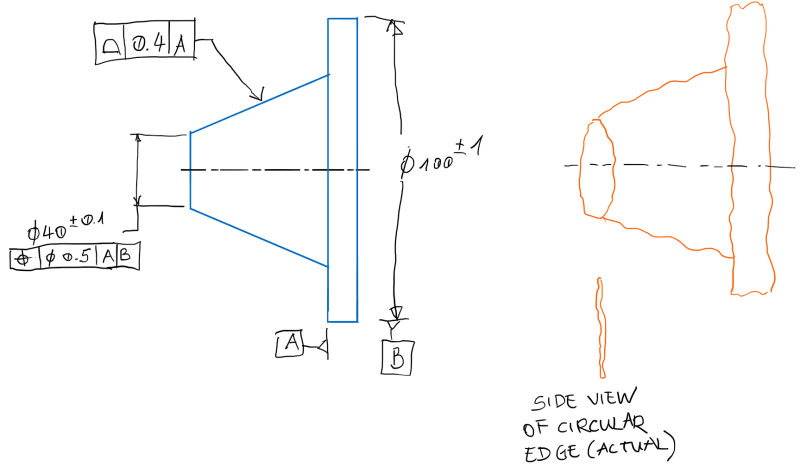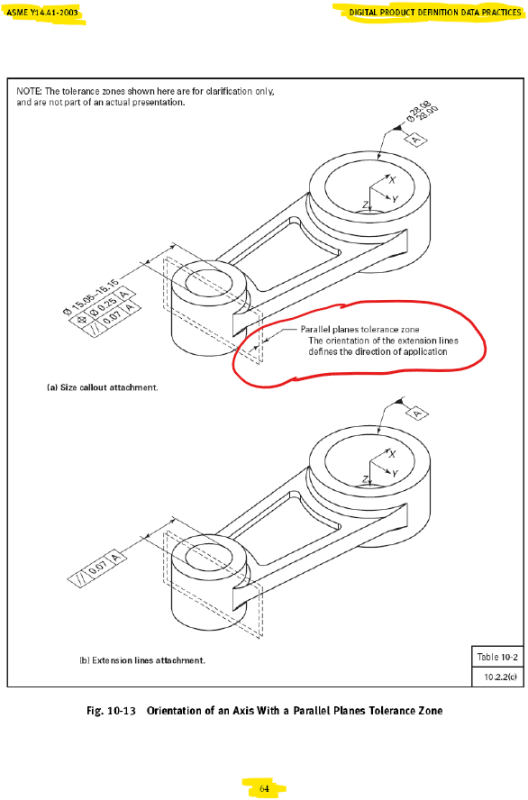Tarator
Automotive
- Sep 20, 2013
- 176
Hi all,
I do have the following two questions to confirm their answers with mine:
1) Can a Position callout be applied to a circular feature of size (2D element)? (My answer is yes)
2) What is the shape of the tolerance zone, a cylinder or a circle? (My answer is a cylinder)
Thank you.
I do have the following two questions to confirm their answers with mine:
1) Can a Position callout be applied to a circular feature of size (2D element)? (My answer is yes)
2) What is the shape of the tolerance zone, a cylinder or a circle? (My answer is a cylinder)
Thank you.



